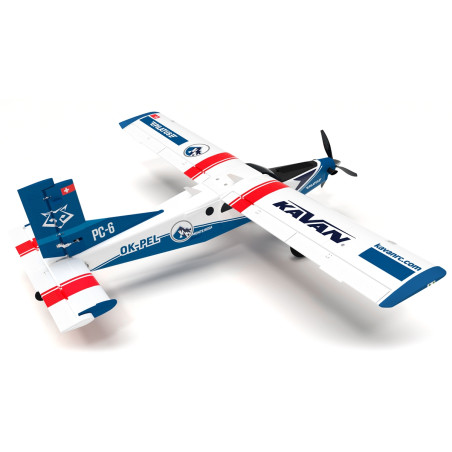














The single-engine Swiss STOL Pilatus PC-6 Porter utility aircraft, originally powered by a six-cylinder Lycoming engine, took part in its maiden battle in 1959. An improved Turbo-Porter powered by a turboprop engine soon followed. Over the years, the turboprop-powered Turbomeca Astazou II, Garret Air Research TPE 331 and eventually the Pratt & Whittney Canada PT6A (about 70% of all PC-6s ever produced) took this beautiful aircraft to the skies.
The aircraft's amazing, almost helicopter-like short takeoff and landing capabilities quickly caught the attention of military and commercial operators. Equipped with wheeled landing gear, skis or floats, Porters have served reliably and relentlessly around the world - flying over deserts, jungles, lakes, mountains, snow and ice - simply everywhere. Not surprisingly, the PC-6 holds the world record for the highest fixed-wing landing at 5750 meters on the Dhaulagiri glacier in Nepal.
After 604 deliveries in 63 years, Pilatus ended production in 2022....
The EPO foam fuselage, fully reinforced with carbon, is equipped with a KAVAN C3548-750 brushless motor, a 10x6" three-blade propeller and a KAVAN R-40SB ESC equipped with a powerful switched SBEC stabilizer necessary to power all 6 servos on board.
The two-piece EPO wing is reinforced with carbon beams and connected to each other by a carbon tube connector. The wing is bolted to the fuselage. The ailerons and flaps are controlled by two pairs of servos installed in the wing, driven by short steel pushrods, and LED position and landing lights are also installed. The easy-to-install carbon fiber wing struts are secured by a pair of steel clamps.
The main steel wire landing gear with telescoping struts, the steel wire tail wheel is connected to the rudder. You can buy an optional float kit for your Porter - it takes a few minutes to assemble the floats and water rudder.
To fly the Porter you will need a 14.8V 2600-3300 mAh battery pack (at least 30°C).
You will need at least a 6-channel RC apparatus. Even a non-computer radio would work well, as the servos for the ailerons, flaps, rudder and steerable front landing gear are each controlled by a single channel (connected via a pre-installed connection board). At least a 7-channel computer radio will work best; independent control of the aileron and flap servos will help you fully enjoy the Porter. Fortunately, even inexpensive radios such as Radiolink AT9S or AT10II, Futaba T6K or T10J offer all the necessary mixes today. In this case, it will be necessary to directly connect the aileron and flap servos. The owner's manual includes a thoroughly tested setup table that will help you easily configure the PC-6, even if this was your first "full house" control plane.
Contents of the ARTF kit: EPO fuselage with brushless motor, 40A ESC, 10x6" 3-blade propeller and 2 servos installed, EPO wing with 4 servos and LED lights installed, EPO horizontal ballast, landing gear and instruction manual.
Technical data:
For more information and photos, please visit the manufacturer's website.
*Follow the enclosed instruction manual and the current legal regulations for flying RC models.
And, what the Pilatus looks like in flight, see below:
You might also like